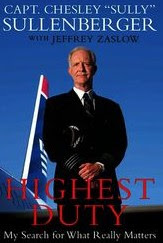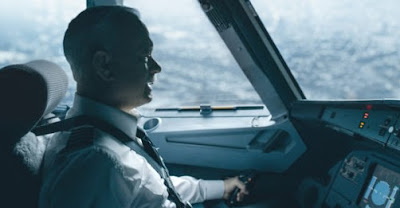Flight 1549
Flight 1549 was scheduled to fly from LaGuardia International Airport, New York to Charlotte Douglas International Airport, North Carolina. The airplane was an Airbus a320 belonging to U.S. Airways. Just 35 seconds after take-off, the plane encountered a bird strike. A flock of Canadian geese hit the airplane. The birds caused a dual engine failure.
U.S. Airways
U.S. Airways was a major American airline headquartered at Tempe, Arizona. It ended service in December 2013 and merged with American Airlines.
Date of incident
The incident happened on January 15, 2009. Flight 1549 took off from LaGuardia at 3:20 PM. Shortly, after reaching 4,800 feet of altitude, the plane struck a flock of Canadian geese which caused a dual engine failure. The plane had to be landed immediately as it started losing altitude and speed.
Action of pilots
The pilot in command that day was Captain Chesley Sullenberger and his First Officer Jeff Skiles. On noticing the loss of thrust on both engines, they switched on the APU (Auxiliary Power Unit) which helped to provide hydraulic power to control the airplane. The airplane had it's callsign 'Cactus 1549'. They reported their problem to ATC (Air Traffic Control) immediately. ATC provided them with numerous airports and runway options to help them land the plane safely. Since the plane was in a critical situation losing speed and altitude, none of the runways could be reached by it. The Captain spoke to the PA (Passenger Announcement) System "Brace for impact". The flight attendants worked together calmed all the passengers. It was because of the combined efforts of the flight that all the passengers onboard survived.
Ditching on the Hudson River
Flight 1549 was not able to land at any given runway. It was a difficult situation to be in losing both of the engines. Both the pilots had to think fast to do the right thing. They finally landed on the Hudson River. It was the best choice to do so. The Hudson River was long enough, wide enough and smooth enough to land an airplane. It was also the safest choice the pilots could have ever made. The Airbus a320 landed in the river after three minutes from take-off.
Rescue of the passengers and crew
After the landing of the plane in the river, the captain came out of the cockpit and said "Evacuate". The first officer was still in the cockpit performing necessary actions on the checklist. The flight attendants provided instructions to the passengers to evacuate the airplane. The passengers exited the aircraft from the forward doors, and the emergency exits near the wings. The water in the river was freezing cold as it was just the end of winter. The rear doors were not used because some of the equipment near it were damaged and the water was filled with metal debris. The tail was the first part to strike the water. This was also the reason why one of the flight attendants at the rear hurt her leg. Later, ships in the vicinity helped to carry the passengers near the ports. A police helicopter came in. The passengers were taken to the hospitals immediately.
Miracle on the Hudson
The media covered the incident within minutes. Upon hearing this, the New York Mayor referred to this incident as a 'Miracle'. So, this incident came to be called as the 'Miracle on the Hudson'. All the passengers onboard the airplane survived and so, it is rightly called a miracle. There was a young baby and a very old woman in a wheelchair in the 150 passengers. This was possible due to the combined efforts of the pilots, flight attendants, captains of the vessels and all the other rescue workers.
NTSB Investigation
The NTSB (National Transportation Safety Board) investigated the incident thoroughly and validated that the airplane lost both of it's engines
Where is the plane now?
The plane had been fished out of the water immediately that night. It was transported to the aviation museum at North Carolina where it is preserved even now. The only reason that this airplane is kept at display is to commemorate the excellent work done by the flight crew and all the rescue workers.
Book related to this incident
A book named 'The highest duty' written by Captain Chesley Sullenberger himself and Jeffrey Zaslow relates and explains in detail about this incident. Captain Sullenberger tells about his tells about his childhood, he path of becoming a pilot and various highlights of his life. It is worthy of reading by an aspiring person to become a pilot.
Movie related to the incident
A movie named 'Sully: The Miracle on The Hudson' is fully based upon this incident. This is a very good movie related to aviation directed by Clint Eastwood. It stars Tom Hanks as Captain Chesley Sullenberger and Aaron Eckhart as Jeff Skiles.
A scene from the movie
Flight 1549 Special Workings:
The history of flaps is longer, and even as varied, as that of slots.The plain or camber flap works on a similar principle as associate degree control surface or alternative management surface; it's actually a ‘variable camber’.
Such flaps were used as early because the 1914-1918 war, and the original plan was a similar like slots, to decrease landing speed with flaps down, and retain most speed with flaps up.
Their early use was nearly completely for deck-landing functions. It appeared initially as if the invention of slots, that followed some years at the moment war, would possibly sound the death-knell of flaps. aloof from it - if something it has been the opposite manner spherical, for flaps became a necessity on fashionable craft.
Flaps, like slots, will increase lift - honours square measure regarding even during this respect to date because the plain (or camber) flap, or split flap cares. But these flaps can even increase drag - not, like slots, at high speed once it's not wished, however at low speed once it's wished.
But the most distinction between the results of flaps and slots.
From this it'll be seen that whereas slots simply prolong the carry curve to higher values of the most carry constant, once the angle of attack of the most portion of the airfoil is on the far side the conventional obstruction angle, the high-lift form of flap will increase the carry constant on the market throughout the complete vary of angles of attack.
However it's not acceptable to check the relative deserves of slots and flaps as a result of in fashionable craft it's usual to combine the 2 in some type or other; and during this thanks to get the simplest of each devices.














0 Comments